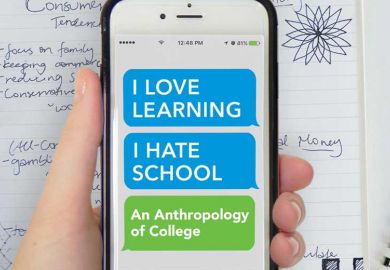Conjuring Asia: Magic, Orientalism and the Making of the Modern World
Chris Goto-Jones
Cambridge University Press
Butterflies and decapitations, mysterious Mongolians and goldfish bowls, fakirs and fakers: the Golden Age of magic, from Robert-Houdin to Houdini, is the focus of scholar and Magic Circle member Goto-Jones as he traces its roots across India, China and Japan. Unpicking the role of Orientalism in the Western cultural imagination in a highly readable account that is ultimately a treatise on modernity, he argues that, far from killing magic, modern science made it better.
Who Cares about Particle Physics? Making Sense of the Higgs Boson, the Large Hadron Collider and CERN
Pauline Gagnon
Oxford University Press
A great general interest primer with a surprising and welcome feminist focus. Quebecoise physicist and CERN veteran Gagnon’s account presents not only a clear account of accelerators, detectors, dark matter and the Higgs boson’s discovery and announcement to the world, but also an essential chapter that considers female physicists at CERN (where “men occupy 82% of all scientific positions”), why there are so few women in science, the LGBT+ community and racial diversity, discrimination at the hiring stage, and women and the Nobel Prize in Physics. She concludes with an eye-opening appendix on Mileva Mari´c Einstein and her inglorious treatment – personally and professionally – at the hands of her husband Albert. Most highly recommended.
Elizabeth Bishop at Work
Eleanor Cook
Harvard University Press
“We can hear the sentence rhythms, jerky, like the start-and-stop arrival of a cold spring”: Cook, an eminent University of Toronto literary scholar, takes on one of the great 20th-century poets and offers a new perspective informed by her own poetic sensibility and skill at close reading. She examines Bishop’s art in detail – her diction, syntax, rhythm and metre, her sense of place and her alertness to the natural world – as well as her determination to push boundaries throughout her career in a study that is at once personal, partisan, rigorous and revelatory.
The Return of Curiosity: What Museums Are Good for in the 21st Century
Nicholas Thomas
Reaktion
“This book is written out of tentative optimism,” offers its author, the director of the Museum of Archaeology and Anthropology at the University of Cambridge. “For all their faults and compromises, museums have a new vitality; they have more to offer than we used to think and may even be places in which the most intractable antagonisms and inequities of our time are addressed and redressed.” Kenyan peace museums, Bill Viola, Stuart Hall, Walid Raad and Thomas Piketty all feature in an articulate testimony to the notion of museums as “creative technologies”.
Maxwell’s Enduring Legacy: A Scientific History of the Cavendish Laboratory
Malcolm Longair
Cambridge University Press
“Any pretense at objectivity would scarcely be credible,” says Longair, modestly, of the chapter that takes in 1997 to 2005, when he headed what is arguably the most famous and Nobel-decorated physics laboratory in the world, the Cavendish in Cambridge, founded in 1874. The electron and neutron, the structure of DNA and the pulsar were all discovered here, and, from Rutherford to Dirac and beyond, those who graced its halls and benches comprise a who’s who of landmark-makers. Weighty, detailed, thoughtful and sober in tone – arguably even more so when the stories of those considered, such as Russian‑born Pyotr Kapitsa, veer to the dramatic – this is, stresses the author, “a scientific history rather than a history in the conventional sense”.
Register to continue
Why register?
- Registration is free and only takes a moment
- Once registered, you can read 3 articles a month
- Sign up for our newsletter
Subscribe
Or subscribe for unlimited access to:
- Unlimited access to news, views, insights & reviews
- Digital editions
- Digital access to THE’s university and college rankings analysis
Already registered or a current subscriber?




